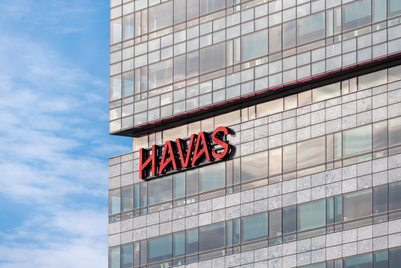
Alibaba Group has reported 51% revenue growth for both the latest quarter and its fiscal year, which ended March 31.
The company said it grew its user base to 654 million annual active consumers while increasing penetration into lower-tier cities. Organic growth (excluding the effects of consolidated businesses) would have been 39% for the year, the company said.
Headline numbers:
- Quarterly revenue: RMB93.498 billion (US$13.932 billion)
- Quarterly net income: RMB23.379 billion (US$3.484 billion)
- Fiscal-year revenue: RMB376.844 billion (US$56.152 billion)
- Fiscal-year net income: RMB80.234 billion (US$11.955 billion)
The main growth driver? Increased sales on the company's main China retail platforms:
- GMV (gross merchandise volume) on the marketplaces hit RMB5.727 trillion (US$853 billion) during fiscal 2019, representing year-over-year growth of 19%.
- Excluding unpaid orders, total physical goods GMV grew 25% year-over-year.
- Tmall physical goods GMV increased 31% year-over-year.
- Taobao physical goods GMV increased 19% year-over-year.
The 654 million figure for annual active consumers represented an increase of 102 million compared to the 12 months ended March 31, 2018, and an increase of 18 million compared with the 12-month period ended December 31.
Mobile MAUs (monthly active users) on the retail marketplaces reached 721 million in March, an increase of 22 million over December and an increase of 104 million over March 2018.
Alibaba said its retail marketplaces are on track to achieve a stated goal of US$1 trillion in total GMV (gross merchandise volume) by the end of fiscal 2020, when Alibaba expects to reach RMB500 billion (US$72.67 billion) in revenue.

The company cited a wide range of factors driving its growth. Some highlights follow.
Core commerce:
Alibaba attributed the performance of its main retail platforms (detailed above) to:
- Effective user acquisition and penetration into less developed cities.
- Higher user engagement driving improving clickthrough rates and better purchase conversion.
- Expansion of the total addressable market by investing in local consumer services and "new retail" businesses.
New retail:
Alibaba touted a few examples of its new-retail efforts:
- A partnership with Starbucks, which by the end of April had enabled on-demand delivery in more than 2,100 stores across 35 cities.
- An effort to digitise 470 Sun Art stores to allow consumers to place orders through the Taobao app, with secure delivery through an on-demand delivery platform operated by Ele.me.
- "Robust" same-store sales growth for Alibaba's own grocery retail chain, Freshippo (known as “Hema” in Chinese). The brand expanded its footprint to 135 stores in China, primarily located in tier one and tier two cities.
International retail:
The company said its cross-border and international retail businesses saw "promising" growth, and Lazada and AliExpress had a total of more than 120 million annual active consumers for the fiscal year.
The company said it has strengthened Lazada’s third-party marketplace business, management team and technology infrastructure while reducing its exposure to direct product sales of low-margin categories.
"We believe this strategy will better position Lazada for sustainable, scalable and less capital-intensive long-term growth," the company's earnings release said. "Lazada will continue to invest in logistics infrastructure in order to improve user experience and reduce delivery cost, as factors such as delivery speed and convenience have become key competitive advantages in the Southeast Asian market."
Cloud computing:
Cloud-computing revenue grew 76% year-over-year to RMB7.726 billion (US$1.151 billion) during the quarter.
Digital media and entertainment:
Youku’s daily average subscriber base increased about 88% through the fiscal year and 50% for the quarter, on a year-over-year basis.
|
For the record Details on Alibaba's financials for the quarter and fiscal 2019: For the quarter ended March 31:
For the fiscal year ended March 31:
|


+(900+x+600+px)+(3).png&h=334&w=500&q=100&v=20250320&c=1)
+(900+x+600+px).jpg&h=334&w=500&q=100&v=20250320&c=1)


.jpg&h=334&w=500&q=100&v=20250320&c=1)

.jpg&h=334&w=500&q=100&v=20250320&c=1)
+(900+x+600+px).png&h=334&w=500&q=100&v=20250320&c=1)







.jpg&h=268&w=401&q=100&v=20250320&c=1)

.png&h=268&w=401&q=100&v=20250320&c=1)